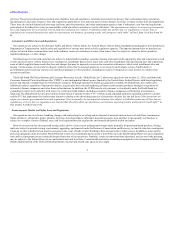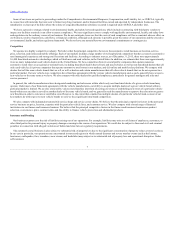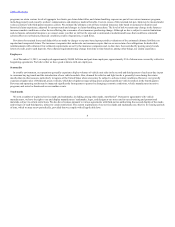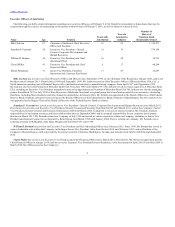AutoNation 2015 Annual Report Download - page 18
Download and view the complete annual report
Please find page 18 of the 2015 AutoNation annual report below. You can navigate through the pages in the report by either clicking on the pages listed below, or by using the keyword search tool below to find specific information within the annual report.
Table of Contents
or cross-default provisions. If any debt is accelerated, our liquid assets may not be sufficient to repay in full such indebtedness and our other indebtedness.
Additionally, we have granted certain manufacturers the right to acquire, at fair market value, our automotive stores franchised by those manufacturers in
specified circumstances in the event of our default under our debt agreements.
Under our credit agreement, we are required to remain in compliance with a maximum leverage ratio and a maximum capitalization ratio. See “Liquidity
and Capital Resources — Restrictions and Covenants” in Part II, Item 7 of this Form 10-K. If our earnings decline, we may be unable to comply with the
financial ratios required by our credit agreement. In such case, we would seek an amendment or waiver of our credit agreement or consider other options, such
as raising capital through an equity issuance to pay down debt, which could be dilutive to stockholders. There can be no assurance that our lenders would
agree to an amendment or waiver of our credit agreement. In the event we obtain an amendment or waiver of our credit agreement, we would likely incur
additional fees and higher interest expense.
As of December 31, 2015, we had $1.8 billion of total non-vehicle debt (including amounts outstanding under our mortgage facility and capital leases)
and $3.7 billion of vehicle floorplan financing. Our substantial indebtedness could have important consequences. For example:
• We may have difficulty satisfying our debt service obligations and, if we fail to comply with these requirements, an event of default could result;
• We may be required to dedicate a substantial portion of our cash flow from operations to make required payments on indebtedness, thereby reducing
the availability of cash flow for working capital, capital expenditures, acquisitions, and other general corporate activities;
• Covenants relating to our indebtedness may limit our ability to obtain financing for working capital, capital expenditures, acquisitions, and other
general corporate activities;
• Covenants relating to our indebtedness may limit our flexibility in planning for, or reacting to, changes in our business and the industry in which we
operate;
• We may be more vulnerable to the impact of economic downturns and adverse developments in our business;
• We may be placed at a competitive disadvantage against any less leveraged competitors;
• Our variable interest rate debt will fluctuate with changing market conditions and, accordingly, our interest expense will increase if interest rates
rise; and
• Future share repurchases may be limited by the maximum leverage ratio and/or maximum capitalization ratio described above.
The occurrence of any one of these events could have a material adverse effect on our business, financial condition, results of operations, prospects, and
ability to satisfy our debt service obligations.
We are subject to interest rate risk in connection with our vehicle floorplan payables, revolving credit facility, and commercial paper program that could
have a material adverse effect on our profitability.
Our vehicle floorplan payables and revolving credit facility are subject to variable interest rates, and the interest rate for our commercial paper notes varies
based on duration and market conditions. Accordingly, our interest expense will fluctuate with changing market conditions and will increase if interest rates
rise. In addition, our net new vehicle inventory carrying cost (new vehicle floorplan interest expense net of floorplan assistance that we receive from
automotive manufacturers) may increase due to changes in interest rates, inventory levels, and manufacturer assistance. We cannot assure you that a
significant increase in interest rates would not have a material adverse effect on our business, financial condition, results of operations, or cash flows.
16
























